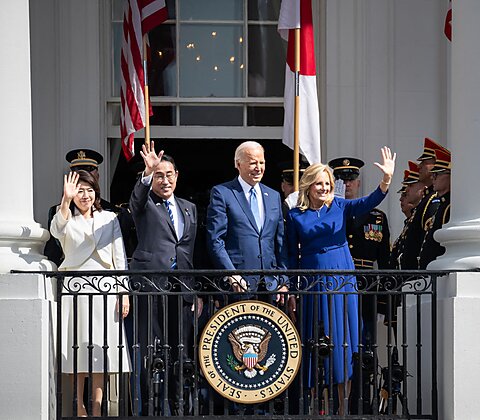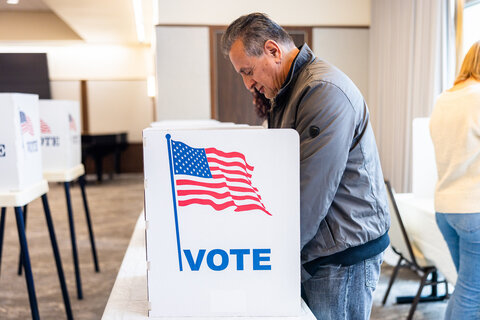Clark Packard and Alfredo Carrillo Obregon
Earlier this week, President Biden welcomed Japanese Prime Minister Kishida for an official visit and state dinner. As tensions in the Pacific mount, particularly with respect to China, Tokyo is an increasingly important ally for the United States. Indeed, the president and administration staffers emphasized the importance of upgrading the US‐Japan alliance into a “global partnership” and both leaders announced measures for increased cooperation in defense, technological innovation, economic security, and diplomacy, among other areas.
Yet history has shown Washington’s international economic policies often belie its lofty rhetoric about the importance of the bilateral relationship with Japan, as domestic politics continue to triumph over sound policy. This self‐defeating pattern hurts the United States both diplomatically and economically. Though by no means comprehensive, here’s a small sampling.
Nippon Steel
A significant “elephant in the room” during Prime Minister Kishida’s visit was the possible acquisition of US Steel by Japan’s Nippon Steel and the political opposition to the deal coming from multiple quarters in the US political system—and most notably from President Biden.
Indeed, the president recently stated that it was “vital” for US Steel “to remain an American steel company that is domestically owned and operated.” As our Cato colleague Scott Lincicome recently explained, Biden’s statement belies the fact that US Steel is a shell of its former self, and both industry experts and US steel‐consuming manufacturers believe that the acquisition would benefit US Steel, the American workforce, and the broader manufacturing sector.
It also stands in sharp contrast with the reality—as Biden himself acknowledged during the visit—that Japan is the biggest source country for foreign investment in the United States and Japanese investments have resulted in jobs for nearly one million Americans. Such investments have also often benefited the US companies being acquired and their surrounding communities.
And insofar as Biden’s opposition to the steel deal is for national security purposes, it clashes with the state of US‐Japan defense cooperation, which has been close for decades and, as stated during the visit, is planned to increase in the coming years. Indeed, Japan hosts US military personnel and Department of Defense (DOD) civilians and their families and acquires more than 90 percent of its defense imports from the US; Japanese investors have not been of concern to the Committee on Foreign Investment in the United States (CFIUS) (which is currently reviewing the Nippon‐US Steel deal) since the 1980s; and Nippon Steel is no longer closely connected to the Japanese government. Twenty‐three percent of the company is owned by non‐Japanese entities.
In sum, most independent observers understand that Biden’s opposition is motivated by electoral politics—as is Donald Trump’s own opposition to the deal—and not economics or national security.
“National Security” Tariffs on Steel and Aluminum
In 2018, the Trump administration declared imported steel and aluminum from every country, including Japan, to be a “national security” threat to the United States and then imposed heavy tariffs (25 percent on steel and 10 percent on aluminum, respectively). It was obviously nonsense; imports from a country the United States is obligated to defend militarily poses zero national security risk. President Trump’s own Secretary of Defense noted that the military only required about three percent of domestic steel capacity. Not only did the tariffs hurt the United States economically, they hurt Washington’s standing in Japan. Eventually the Biden administration announced it had replaced the tariffs on imports from Japan with a tariff‐rate quota, allowing a limited amount of steel and aluminum to enter the country without being subject to the 232 tariffs.
TPP
The Trans‐Pacific Partnership (TPP) was envisioned as a comprehensive trade agreement that would deepen economic cooperation in the Pacific with a mind toward reorienting supply chains outside of China. There were 12 original signatories, but the United States and Japan were arguably the primary proponents of the agreement. The Japanese government faced intense domestic political opposition to the deal, but stuck its neck out because it understood the benefits of deeper economic integration with the United States and the Pacific region more generally, especially in light of China’s economic rise (and abusive trade and investment practices).
Washington, however, didn’t uphold its end of the bargain. TPP became a political hot potato during the 2016 presidential campaign with both major party candidates opposing the deal. Once in office, the Trump administration made an ill‐advised decision to walk away from the agreement. This marked a turning point: the first time the United States failed to implement a trade agreement it negotiated and signed. At the behest of the Japanese government, the TPP was renamed the Comprehensive and Progressive Trans‐Pacific Partnership (CPTPP) and moved forward without the United States.
Though imperfect, CPTPP was a good deal economically and strategically. Today, American consumers face higher prices for products from CPTPP bloc countries than they would if Washington had embraced the agreement. Likewise, American producers face higher trade barriers than their competitors within the bloc. On top of that, Washington retreated from a vital standard‐setting role by walking away from the deal—a loss of soft influence in an increasingly vital part of the world.
Washington’s about‐face on the deal cost the United States some credibility with Tokyo. Japan continues to press the United States to return to the CPTPP. But, to date, Washington has shown no appetite to accept the political risks to do the responsible thing and rejoin.
Automotive Voluntary Export Restraints
As Dr. Douglas Irwin notes in his masterful, comprehensive history of US trade policy, Clashing Over Commerce, Japanese producers’ share of the US automotive market was about 1 percent as late as 1968. After the oil shock and attendant price spikes in 1973, American consumer preferences shifted and demand increased for smaller, more fuel‐efficient cars (a segment largely controlled by Japanese producers; the Big Three at the time—Chrysler, Ford and GM—ceded that segment of the market). As a result, Japanese imports began to grow. Calls to restrict Japanese autos in the US started to proliferate around Washington in the late 1970s.
In the early 1980s, over the objections of OMB Director David Stockman, Treasury Secretary Don Regan, and Chairman of the Council of Economic Advisers Murray Weidenbaum, the Reagan administration pressured the Japanese to voluntarily limit its automotive exports to the United States by about 8 percent. The automotive voluntary export restraints (VERs) were agreed to by the Japanese government and its auto manufacturers because the alternative was a stiff tariff. The VERs were initially in place for three years. But then, facing reelection in 1984 and not wanting to alienate Midwestern auto workers, the Reagan administration once again pressured Japan to renew the VERs. In other words, like the Nippon deal, the automotive VERs were largely driven by short‐term, domestic political concerns—at the expense of long‐term geopolitical objectives and sound economics.
For Americans, it was estimated that the VERs increased the price American consumers paid for Japanese cars by about $1,000 at the time or more than $3,000 in today’s dollars—about 14 percent above what they would have paid without the VERs. Likewise, the increased prices for Japanese imports allowed domestic producers to raise their own prices.
A few years ago, our Cato colleague Scott Lincicome provided a detailed summary of the harms done by the VERs. Contrary to claims from certain protectionists, none of the results of the VERs were positive for the United States. Japan eventually dropped the VERs in 1994 after they were abolished by the Uruguay Round Agreements, which converted the General Agreement on Tariffs and Trade into today’s World Trade Organization.
Japan was largely compliant with Washington’s requests for VERs if for no other reason than their national security depended on the United States’ security guarantees—and they feared a heavy tariff would be even worse. But the VERs very clearly caused diplomatic frictions between Washington and Tokyo, on top of the self‐defeating economic problems associated with the restraints.
Conclusion
In recent years, policymakers have increasingly talked about the concept of “friendshoring”—strengthening trade and investment ties with close allies—as a new paradigm to guide US international economic relations in light of intensifying competition with China and legitimate concerns over Beijing’s troublesome practices. Yet in a recent test case for its commitment to this new framework—Japanese-based Nippon Steel’s proposed acquisition of US Steel—Washington failed miserably. Indeed, the Biden administration’s opposition to the Nippon deal is not an outlier—it is the latest in a long line of international economic policy affronts to Japan.
If Washington is truly serious about confronting Chinese economic practices, it needs allies like Japan—and policy should reflect the seriousness of the challenge.




